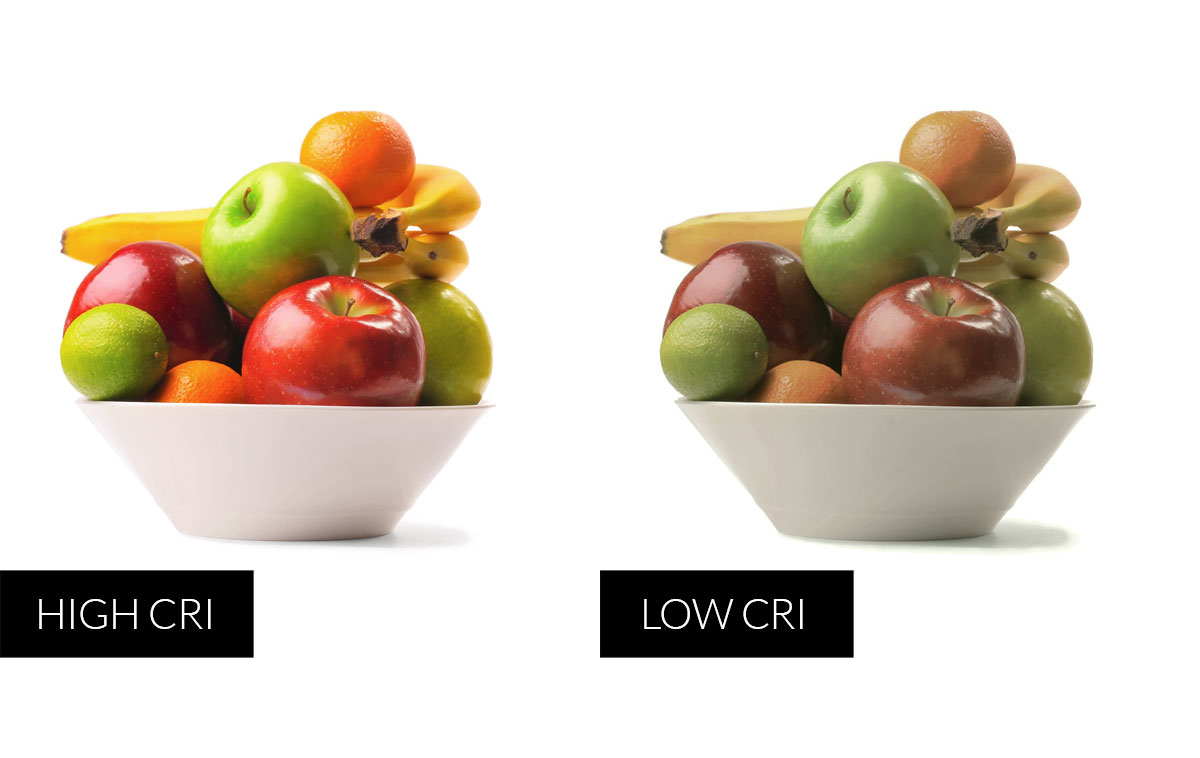What is CRI?
Colour Rendering Index (CRI for short), relates to light source quality in terms of how well it renders colours or objects in comparison to natural day light. For example, natural light would be considered as having a CRI of 100, so the closer the number an artificial light source is scored to 100 the better it is at rendering colours.
If you have ever purchased an item of clothing and noticed that it looked a different colour outside in the daylight from when you tried it on in the fitting room - then this would be a good example of where the CRI of the lighting in the store is not a close match to daylight. Or perhaps you have visited a salon and found your hair looking a different colour in the salon chair to when you stepped outside in the natural light? A light source with a high CRI of 90+ would be a very close likeness to daylight so would be seen to render colours to their true likeness - a light source with a low CRI however would be a sign that the light source would nor render objects/ colours to their true likeness.

Having a light source with a very high CRI (90+) is important for lighting designers working on projects such as art galleries, or lighting for the print industry so that colours can be shown as close as possible to their truest form. Most commercial lighting projects, such as lighting for retail or offices can manage with CRI 80+.
An example of a light source with a very low CRI would be street lighting which can sometimes be as low as CRI 20. Think back to when you see cars under street lighting and how they can appear very flat and certainly not the same colour as they would in natural daylight.
CRI (Colour Rendering Index) is measured in Ra.
Headquarters
+44 (0)23 8202 2100sales@arli.co